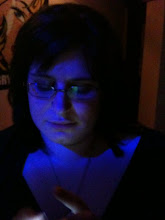I thought that someone had probably already done something similar, though I’d already googled variations on “light up cranes” to make sure I wasn’t copying someone else’s work, so I spent a while googling “make your own fairy lights”, “make your own LED art installation” etc. Turns out, the information superhighway is deficit in light up stuff with clear and easy instructions on how to Do It Yourself.
I googled LEDs, thinking that I was pretty au fait with them already, and it would be a doddle to figure it out, which led me on to realise that despite doing electronics at school, being responsible for the lighting rig at college, and making my own light-up tiara for my wedding, I haven’t the faintest idea how electricity works. Now I’ve spent hours reading up on it, I know less than before.
Since when did I let that stop me?
First task was to find the easiest thing that lights up that I could make. Google yielded an LED throwie. Okay, that looks pretty simple, and I don’t even need the magnet that it’s attached to, so basically I’m looking at taping an LED to a battery, and that’s it. Easy.
Off I went to the local cheap shop to buy:
- one of everything with an LED in it (I wasn’t sure which would be easiest to dismantle)
- a shed load of extra coin batteries (no idea what the difference is in batteries bar size, and don’t really understand the whole voltage thing, but I’m guessing it’s not going to be high enough to cause me any permanent harm) and
- lots and lots of insulation tape. I pretty much live by the “if in doubt, stick tape on it” mantra.
Here’s (part of) my haul:

The LED tealights seemed to be the flimsiest, so I started by trying to take one apart. I actually did this before I even got home, so there’s no pictures, but it was really simple – prise off the bottom and the electric bit falls out, then you can wiggle the LED until the bit soldered to the rest of the mechanism (probably not the right word, but the switch and battery pack and stuff) snaps off. Et voila! You have an empty casing, a load of now useless electric mahgumbo and an LED bulb. They even came with batteries included, so I popped those out to experiment with.
The batteries were teeny-tiny, and there were three of them, which when I finally managed to juggle them into line and put the LED sticks (what do you call the bits that come off the bulb?) onto them made the LED light up! Hurrah, I am a bona fide electronic genius!
Next was to stick a load of tape around this to keep it all together, and then I quickly folded up a crane out of the paper I’d decided to use, and then proceeded to gut it to slide the LED contraption into the middle of it. Finally, I had my very first LED prototype (I decided that the Christmas light one was a test, not a prototype, okay?) of my light up cranes:

The picture isn’t very good, mainly because I’m not a very good photographer. Plus, using a flickering candle LED meant that much like the Christmas light I used when testing out papers, the light was dimmer than I’ll want it for the proper installation, flickery (great for simulating candles, rubbish for cranes) and yellow, whereas I’m planning on using superbright white LEDs. I used the night-vision setting on my camera to show the crane up a bit more:

So, it’s possible. There’s still a million things to sort out, like how do you wire up 1000 LEDs and put them inside the cranes, and string it all up before the LED starts to run out? But, it’s looking properly possible now, and I’m getting rather excited!


